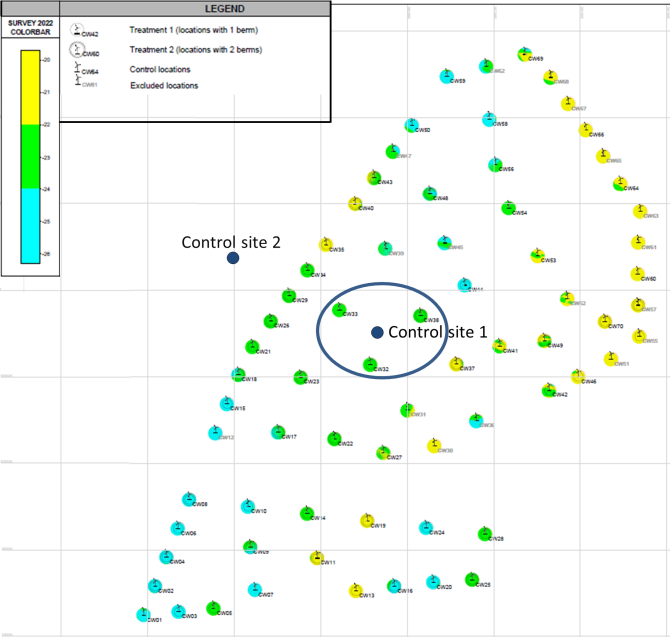
Project
BeWild
Motivation:
While many new offshore wind farms (OWFs) are to be built in the North Sea, the effect of these wind parks on the local ecosystem is not fully understood. The artificial reef system at the base of each monopile, created by the boulders and rocks from the scour protection, provides an attractive habitat for many fish and invertebrates. Using environmental DNA (eDNA), we study the ecological development of fish and invertebrates on and around the scour protection in CrossWind, an offshore wind park in the Dutch North Sea.
This PhD project is part of the BeWild consortium, which consist of CrossWind (owner-operator of the OWF), Fugro (offshore company which provides maintenance on OWFs) and other collaborators with interest in OWFs and their effect on ecology (Mecal, the Rich North Sea, Seakable, WUR’s Environmental Policy Group). The sampling campaign is designed together with CrossWind and Fugro, as the latter is developing an autonomous sampling device which could replace the current manual sampling techniques.
Aim & objectives/research questions:
While the main goal is to determine the ecological development of invertebrates and fish on and around the scour protection of CrossWind’s OWF, the project consist of four objectives:
- Verify the use of from through a series of controlled experiments.
- Improve the reference database by adding 20+ of marine .
- Determine on the scour protection of CrossWind over the course of three years using and .
- Construct a basic of the based on the species identified using metabarcoding and native sequencing.
Methodology:
irstly, we try to understand what kind of information we can obtain from native sequencing data, and how we can enrich target (animal) DNA. This is done by native sequencing a series of water samples related to the critically endangered European sturgeon (Acipenser sturio). We obtained water samples from a highly concentrated environment (holding aquarium in Blijdorp Zoo), a highly concentration field environment (sturgeon release in the Biesbosch nature reserve) and field samples from an offshore wind farm where Acipenser sturio was detected through metabarcoding.
Secondly, we will improve the genomic reference database of marine species, used to link DNA strands to species. By expanding the reference database, we can link more DNA strands to more species, improving the detection rate of target species. We aim to sequence and assemble the genomes of over 20 species, all of which are expected to occur on or around the scour protection in CrossWind. We include various motile and sessile invertebrates as well as fish.
Thirdly, we collect water samples from the scour protection in CrossWind in order to identify the species present on and around this artificial reef. We identify species through metabarcoding, as well as native sequencing, and compare the results to determine how these two methods can complement each other. The metabarcoding method is expected to yield more species due to a more elaborate database, while the native sequencing can provide us with insights on genetic diversity within and between species.
Lastly, a basic food web of the CrossWind scour protection is constructed based on the species identified through metabarcoding and native sequencing. Since we collect water samples during different seasons, and over the course of three years, we are able to study the development of the biodiversity and key species during the year and over a longer period of time. By studying the ecological development over time, we are able to discover the potential benefits of the scour protection of offshore wind farms.
